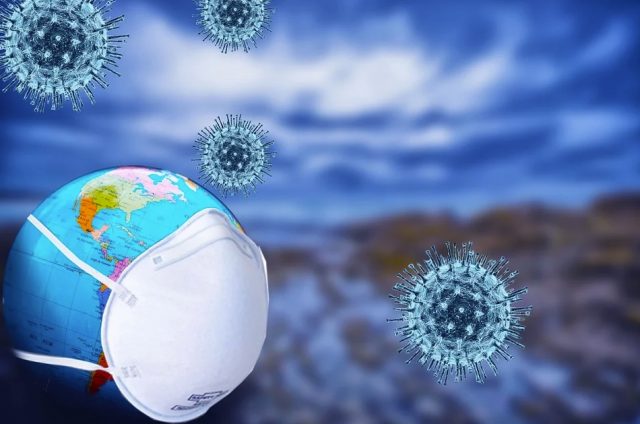The COVID-19 pandemic has destabilized the entire world. Even now, with vaccines widely available, there’s still a lot of uncertainty about how things will unfold in the future. Will we ever return to a pre-COVID-19 life? Will the virus become weaker in time? Will we be able to develop more effective vaccines or treatment paths? Questions abound. Many infectious disease experts try to determine how the situation will involve in the short- to medium-term. So far, the consensus is that the virus will not disappear any time soon. We will have to continue to fight it. However, in time, we will most likely develop better fighting strategies.
Read on to discover more about what our future will look like in a world with COVID-19.
Superior COVID-19 Testing Solutions
A likely scenario for the near future is that we will learn to manage the transmission of the virus more effectively. Various companies are already working on COVID-19 diagnostic testing solutions that are more accurate and quicker than current options.
Technically-innovative saliva collection kits authorized for COVID-19 testing are already available. These medical devices can drastically improve the testing process. Tests based on nasal-swab samples are uncomfortable, if not painful. Saliva sample collection is an easy and quick process, and it doesn’t require assistance.
Although there are several rapid antigen tests available on the market today, not all brands offer the same level of diagnostic accuracy. In the future, we can expect more reliable results from rapid testing. Having reliable diagnostic testing kits that provide immediate results at home will gradually become normal.
Seasonal Infection Patterns
Some epidemiologists believe that COVID-19 will become a mild seasonal disease, most likely to affect people in the colder seasons. Given the high number of people who have already been infected or are vaccinated, identifying the seasonal patterns can be challenging. Every country and state has implemented different policies for managing the pandemic at different moments, so the data we have so far is inconclusive.
There isn’t clear evidence that the virus’s virulence is seasonal. However, there are high variations in infection rates between summer and winter. Many scientists speculate that the differences are related to our habits and behavior. In the summer, people spend more time outdoors. With limited indoor contact, the virus transmits less in summer. Conversely, it transmits more in winter when people are confined indoors.
In epidemiology, seasonality is an important concept. Some viruses thrive in winter and die out in the summer. It’s still early to tell how COVID-19 will behave, but there is strong indication that it may become seasonal.
Periodic, Irregular Resurgence
All the data gathered so far from countries with high vaccination rates suggests that we should expect a periodic, irregular resurgence in cases. This has happened in the United Kingdom, Canada, the United States, and Israel. Various studies have confirmed waning immunity from vaccines. Even after two doses of vaccine, antibody levels gradually drop. Although the risk of hospitalization or death is significantly lower after vaccination, infection is still possible.
While the vaccines do not provide long-term immunity, studies show that infection triggers long-term immune responses. Thus, immunity generated from COVID-19 vaccines differs from the immunity acquired through infection.
With people having varying degrees of immunity, there is always a subset of the population vulnerable to infection. This is why we should expect a periodic, irregular resurgence in cases. The good news is that most cases will be mild, given that most people are gradually acquiring some level of immunity, either from previous infections or from vaccines.
New Mutations and Virus Variants
RNA viruses like the novel coronavirus are known to evolve in time. The vast geographical spread gives rise to genetically distinct variants. A new variant appears when the virus’s genes suffer a mutation. This basic explanation is enough to suggest that we can expect new virus variants to appear in time. COVID-19 is present all over the world, so new variants have the perfect conditions to emerge. It has already happened in the United Kingdom, South Africa, and Brazil, and it will likely happen again.
The impact of COVID-19 on the world will depend on the virus’s evolution. Importantly, there are control measures we can take to prevent mutations. An effective measure is stopping uncontrollable virus transmission through vaccination, use of faces masks, and social distancing.
It is too soon to determine how our immune systems will handle various mutations of the virus. What’s important to know at the moment is that the less opportunity we give to the virus to spread, the less it will evolve.
High Global Awareness About Health Threats
For the entire world, the COVID-19 pandemic has also been a lesson on cooperation, collaboration, trust, and solidarity. Although humanity has dealt with epidemics and coronaviruses before, nothing raised public awareness about these issues as COVID-19. The virus has shown our vulnerability and has thought us about the danger of undermining a potential health threat.
We can expect governments and individuals to cope better when faced with a global threat. According to epidemiologists, the probability of another epidemic taking over the world is high. COVID-19 should serve as a warning that we must always have a thorough plan for dealing with unexpected health threats.
High public awareness about health issues is important because it can dictate government policies and encourage effective resource allocation. Awareness also encourages individual action.
Final Words
COVID-19 appeared in our lives all of a sudden, but it will not disappear in the same manner. Scientists from all over the world agree that the virus will always be around, but its virulence will not stay the same. In the future, infection will likely not lead to hospitalization or death, and certainly not as often as today. Mild symptoms will be the average reaction to infection. These current predictions are based on research carried by dozens of scientists from all across the world.
All the information so far suggests that it’s impossible to imagine a future without COVID-19. However, we will learn to live with it without letting it affect our quality of life.

A professional writer with over a decade of incessant writing skills. Her topics of interest and expertise range from health, nutrition and psychology.




